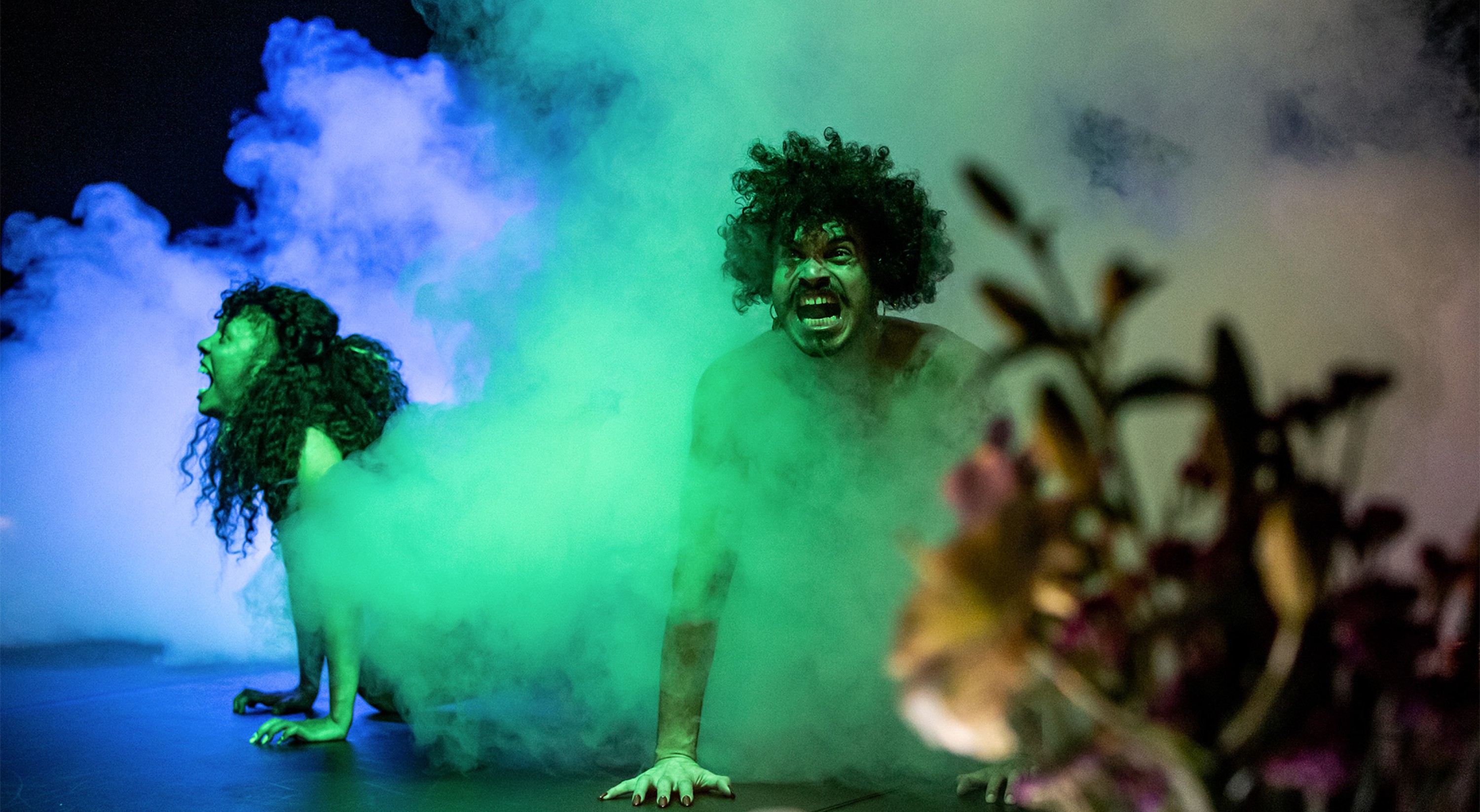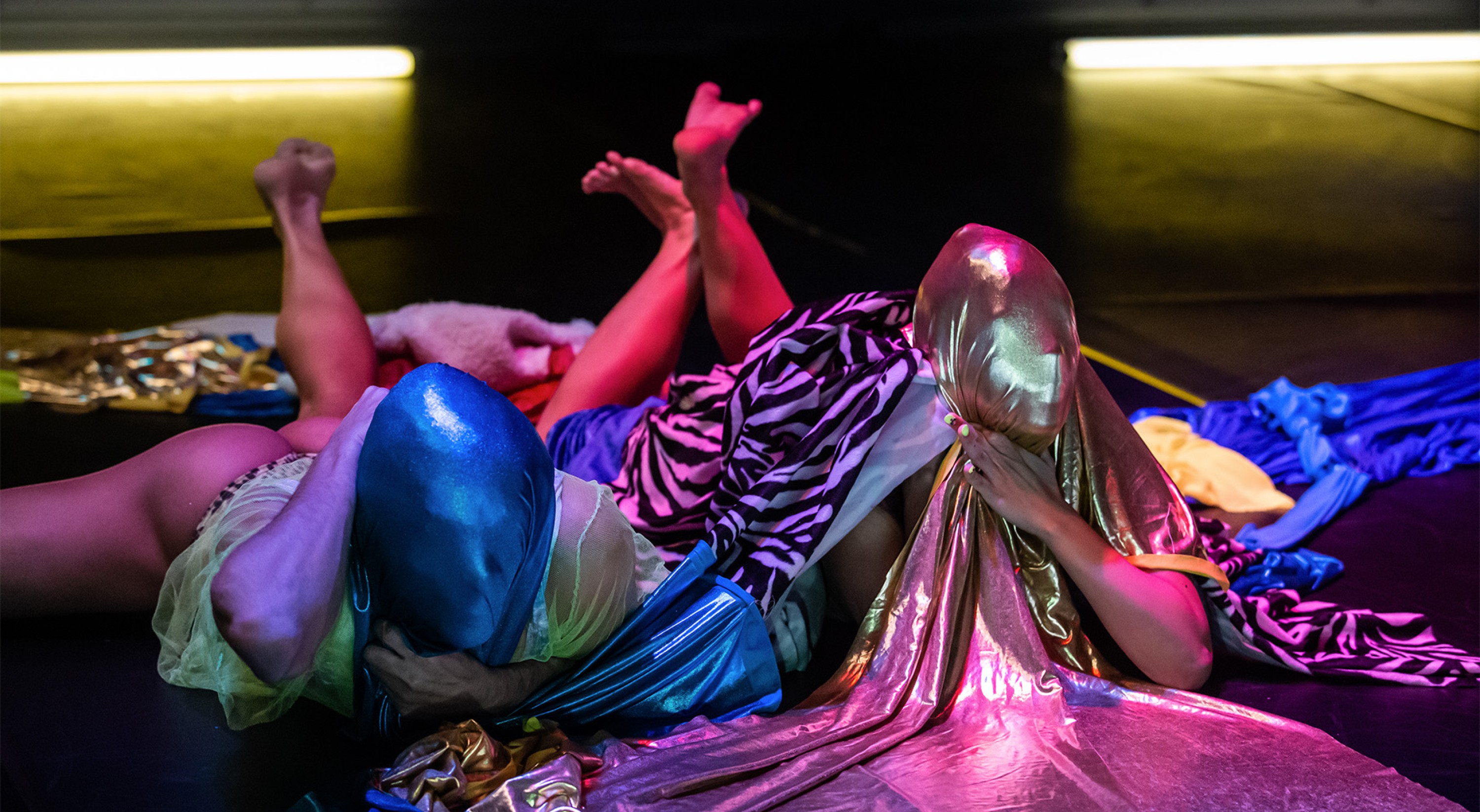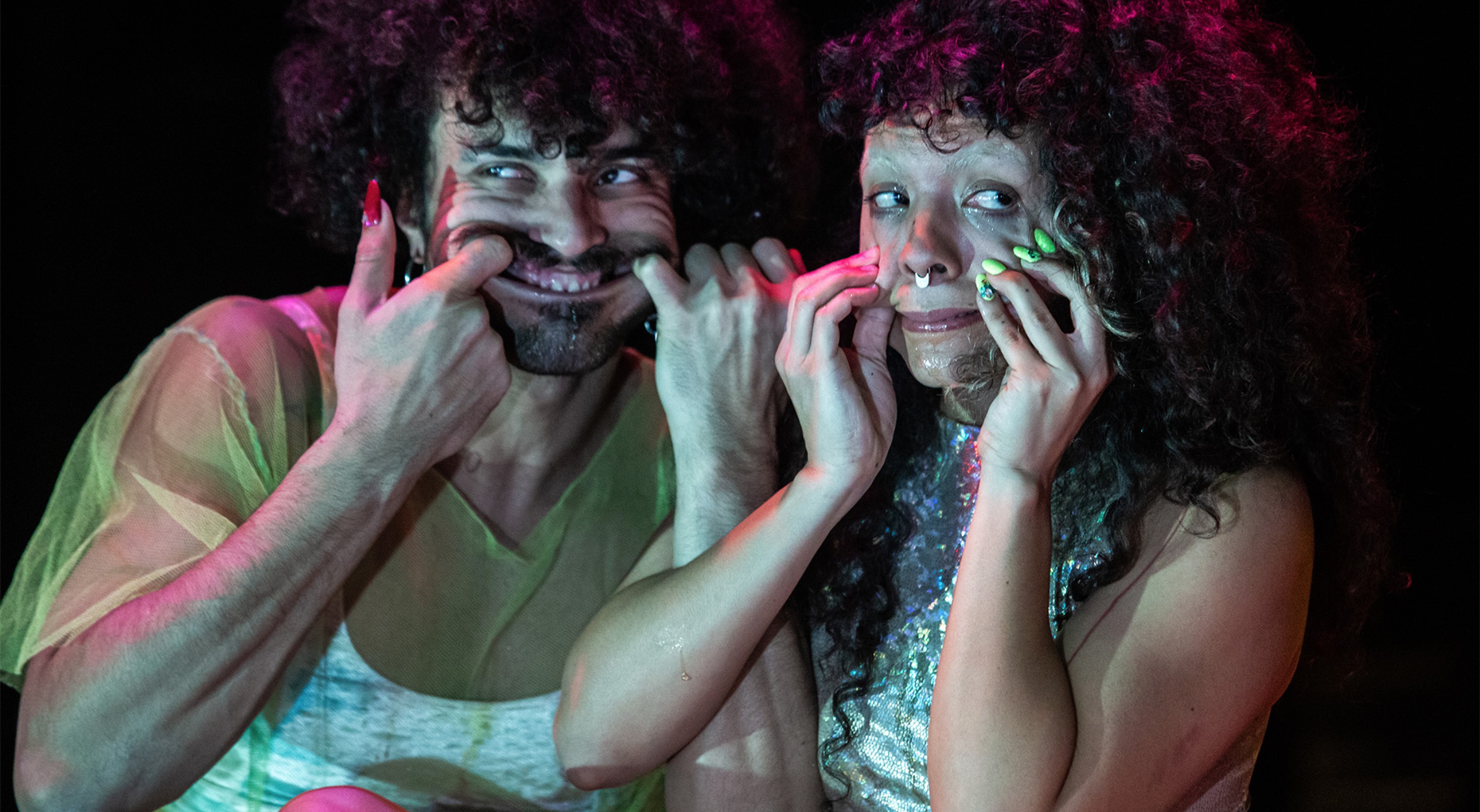Échelle Humaine Luara Raio
Apocalypso
septembersept 15 – 16
Design and direction, Luara Raio
Choreography and interpretation, Luara Raio and Acauã El Bandide Sereia
Lighting, Lui L'Abbate
Set and Costume Design, Luara Raio and Anat Bosak
Coproduced by Centro Cultural de Belém; O Espaço do Tempo & Rua das Gaivotas 6 (Lisbon); Teatro Praga (Lisbon); CND Centre national de la danse (Pantin)
In residency at Honolulu (Nantes); Criatório - Circolando (Porto); ICI-CCN Montpellier-Occitanie - directed by Christian Rizzo; Forum Dança (Lisbon)
With the support of Fonds de soutien à l'insertion post exerce initiated by ICI-CCN Montpellier-Occitanie - direction Christian Rizzo ; Drac Occitanie / ministère de la Culture; Circolando; Centro Cultural de Belém; O Espaço do Tempo & Rua das Gaivotas 6 (Lisbon); CND Centre national de la danse (Pantin)
Financing DGarts; Government of Portugal
Apocalypso is a duet conceived and directed by Luara Raio, performed and co-created with Brazilian dancer and choreographer Acauã El Bandide Sereia.
Apocalypso attempts to tear away the veils covering the invisible mechanisms of world colonisation, in order to destroy them. This destructive wave is rooted in a sensitive intersection activated by the body, as a cartography of a hybrid place where performance, spirituality and fiction blur their boundaries. Apocalypso invokes the opacity of certain "undergroud" images, masked by a racist, colonial and cis-heteronormed vision of the world. Through the performance of their two racialised and queer bodies, guided by ancestral and animist invocations, the duo remind us that "we are crossroads" and that we need to be together and share our stories.
Please note the use of stroboscopic effects during the show.


